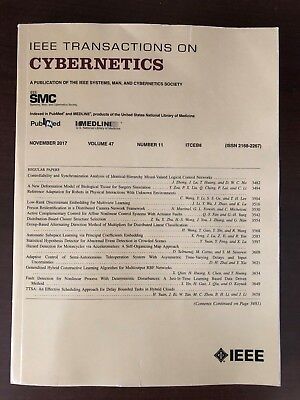Active Learning for Object Detection With Vectorized Dual Pseudo Loss and Multiple Instance Offset Constraint.
IF 9.4
1区 计算机科学
Q1 AUTOMATION & CONTROL SYSTEMS
引用次数: 0
Abstract
Existing active learning methods for object detection face challenges, such as the lack of ground truth labels for regression loss, insufficient representation of unlabeled instance samples information, and discrepancies in information quality between image-level and multiple anchor-level instances. To address these issues, we propose an active learning method for object detection with vectorized dual pseudo loss and multiple instance offset constraint. This method implements a two-stage framework. The first stage focuses on evaluating the information quality of detection images. We first pioneer a dual pseudo loss formulation that provides theoretically grounded regression loss estimation. The regression loss is calculated as the norm of the ODLV between the enhanced and original base box vector, further constrained by the cosine value of the angle between the anchor box feature and regressor parameters vector. The distance entropy from the base box feature vector to each category's feature prototype vector is used as a weighting factor for the regression and classification information quality of instance samples. Subsequently, the second stage employs diversity-driven sampling on high-information images, leveraging instance-level cosine similarity to effectively remove redundant images. The proposed method outperforms state-of-the-art active learning approaches for object detection on PASCAL VOC and MS COCO datasets. Additionally, the proposed dual pseudo regression loss robustly captures regression information quality, demonstrating its effectiveness for active learning in object detection.基于向量化双伪损失和多实例偏移约束的目标检测主动学习。
现有的用于目标检测的主动学习方法面临挑战,例如缺乏回归损失的基础真值标签,未标记的实例样本信息的表示不足,以及图像级和多个锚点级实例之间的信息质量差异。为了解决这些问题,我们提出了一种具有向量化双伪损失和多实例偏移约束的目标检测主动学习方法。该方法实现了一个两阶段框架。第一阶段的重点是评估检测图像的信息质量。我们首先开创了一个双重伪损失公式,提供了理论上接地回归损失估计。回归损失作为增强基盒向量与原始基盒向量之间ODLV的范数计算,并进一步受到锚盒特征与回归量参数向量之间夹角的余弦值的约束。将基盒特征向量到各类别特征原型向量的距离熵作为实例样本回归和分类信息质量的加权因子。随后,第二阶段对高信息图像采用多样性驱动采样,利用实例级余弦相似度有效去除冗余图像。该方法在PASCAL VOC和MS COCO数据集上的目标检测方面优于最先进的主动学习方法。此外,所提出的双伪回归损失稳健地捕获了回归信息质量,证明了其在目标检测中主动学习的有效性。
本文章由计算机程序翻译,如有差异,请以英文原文为准。
求助全文
约1分钟内获得全文
求助全文
来源期刊

IEEE Transactions on Cybernetics
COMPUTER SCIENCE, ARTIFICIAL INTELLIGENCE-COMPUTER SCIENCE, CYBERNETICS
CiteScore
25.40
自引率
11.00%
发文量
1869
期刊介绍:
The scope of the IEEE Transactions on Cybernetics includes computational approaches to the field of cybernetics. Specifically, the transactions welcomes papers on communication and control across machines or machine, human, and organizations. The scope includes such areas as computational intelligence, computer vision, neural networks, genetic algorithms, machine learning, fuzzy systems, cognitive systems, decision making, and robotics, to the extent that they contribute to the theme of cybernetics or demonstrate an application of cybernetics principles.
 求助内容:
求助内容: 应助结果提醒方式:
应助结果提醒方式:


